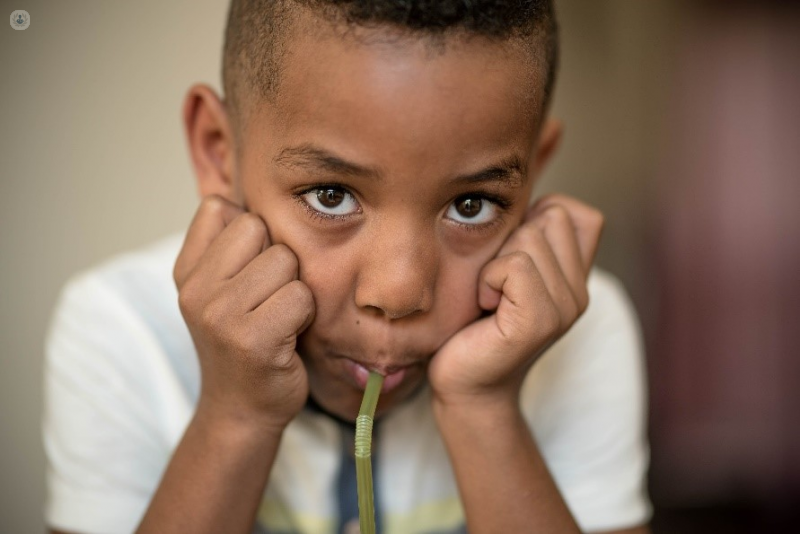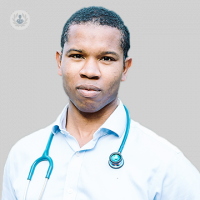Paediatric allergies: what are the main types of allergic reactions?
Written by:An allergy exists when the immune system produces a harmful or irritant reaction to a specific type of food, airborne or another trigger. These triggers are known as allergens. To understand the different types of allergic reactions your child might experience, consultant respiratory and general paediatrician, Dr Chinedu Nwokoro, has put together this useful guide.

Is an allergy the same as a food intolerance?
No. Food allergy is distinct from food intolerance which is triggered by other non-allergic causes. These include:
- Coeliac disease – this is where the presence of gluten - a protein found in wheat, barley and rye - causes the immune system to react against itself (an autoimmune response) and attack the body, usually causing damage to the lining of the gut. This results in a range of symptoms, some of which can be mistaken for allergic reactions.
- Lactose intolerance – where the body is unable to digest lactose, due to a lack of an enzyme called lactase found in the gut. Ingesting milk and other dairy products can result in pain, bloating, diarrhoea and/or constipation.
- Irritable bowel syndrome – this condition is a poorly understood, long-term condition of the digestive system which causes bouts of stomach cramps, bloating and diarrhoea. There is no physical evidence of gut damage.
What are the main types of allergic reactions?
Allergic reactions - also known as hypersensitivity - can be divided into immediate (type 1) allergy or delayed type-allergy.
Immediate reactions
This kind of reaction usually occurs within minutes (but sometimes up to two hours) of allergen exposure and is caused by the overproduction of immunoglobulin type E (IgE) by the immune system in response to that allergen. They tend to be more severe and can include one or more of the following symptoms:
- red, swollen and itchy rash, often known as hives (the medical term is urticaria)
- swelling of the lips and face, known by specialists as angioedema
- swelling of the intestines which causes abdominal pain, vomiting, pallor (unhealthy pale appearance) and diarrhoea
- inflammation of the upper airway, causing sneezing, nose blockage or runny nose (rhinorrhoea), itchy eyes (conjunctivitis), cough, noisy breathing and throat tightness
- inflammation of the lower airway causing breathing difficulty, wheezing, chest tightness and, very rarely, causing the person to collapse (this is called anaphylaxis)
Delayed type reactions
These usually arise within 48 hours of exposure to an allergen but are not caused by IgE. These reactions are often milder and include the following symptoms:
- gastro-oesophageal reflux (symptoms include heartburn, feeling sick and reduced appetite)
- the development or worsening of eczema, loose, frequent and/or bloody stools (can cause a nappy rash)
- constipation
- stomach ache
- appearing pale
- tiredness

Mixed type reactions
Some children will show both types of reactions to the same allergen.
Anaphylaxis
This is a serious and life-threatening type of allergic reaction that is rapid in onset. The most common reactions are caused by foods, medications, insect bites and latex. It is treated with intramuscular adrenalin via an adrenalin autoinjector, sometimes called an adrenaline ‘pen’.
Anaphylaxis is present when one or more of reduced blood pressure, breathing difficulty or airway problems occur during an allergic reaction. Symptoms can, therefore, include any standard type 1 allergy symptoms but also include or progress to one or all of the following:
- feeling of light-headedness
- throat tightness
- shortness/loss of breath
- loss of consciousness or collapse
Important note:
- standard features of allergy are not always obvious or present in anaphylaxis. If a child at risk of anaphylaxis shows reduced consciousness or breathing difficulties then anaphylaxis should be considered and adrenalin should be given swiftly.
- the risk of anaphylaxis cannot reliably be predicted by a blood test or skin prick test.
- Allergic reactions can vary in severity and complexity. Anaphylaxis can occur despite your child previously experiencing mild reactions to the same allergen.
If your child experiences anaphylaxis they must receive immediate medical treatment with intramuscular adrenalin. Anaphylaxis can kill if not swiftly treated and so accurate assessment of risk and early use of adrenalin is crucial.
If you suspect your child may have developed an allergy and would like an allergy test, visit Dr Chinedu Nwokoro’s profile and book an appointment to see him at his clinic. Alternatively, he offers an e-Consultation service, so you can talk to him about any doubts you have from your own home.



